Pixel3 was conceived as a three dimensional inhabitable field, thus it can accommodate projects designed by RDI´s young talents. Its design process is based on the use of parametric point attractors able to deform the field’s density, according to programmatic requirements such as display areas, circulation, meeting points, and areas for gathering. This distortion was executed in three axes (x,y,z), forming a constellation of different positive -negative spaces, which accommodated a huge number of physical objects, printed posters, and boards as well as screen displays and video projections. The three dimensional exhibition space was materialized as a set of 115 opaque textile banners and 36 MDF cubes, responding to the project’s limited budget requirements.
The initial design uses parametric configurations that create a field condition which reacts to the algorithmic attractors positioned programmatically to inform the 3-d model. In addition, the execution of a Pixel3 field, also reacts to China as a contextual condition. The proposed field was executed with the precision of a complex parametric model. As the program changed, the parameters were updated to dictate its final form. The physical execution and design build detailing had to act in reactionary form to the limitations of budget and zero access to digital fabrication. The essence of the original design condition is achieved and enhanced by a regional execution due to the contextual construction techniques and limitations.
The rationalization of the field of transparent planes found its actual detail from the vertical blinds in one of the meeting rooms where detailing was originally being discussed. The same fabricator of the blinds executed the 115 actual floating planes from this same detail. The installation venue prohibited the use of drilled hooks in the ceiling, so adhesive back hooks took their place. The actual rigging was done with nylon fishing line and a found clamp and ring contraptions found at a local hardware store.
Pixel3 is an inhabitable landscape that configures itself around a specific exhibition programmatic that provides the ideal environment for the contemplation of academic exploration. Though design initially using parametric configurations this field condition reacts not only to the algorithmic attractors positioned programmatically to inform the 3d model. The execution of the Pixel3 field also reacts to China as a contextual condition. The initial field was executed with the precision of a complex parametric model, as the program changed the parameters were updated to dictate its final form. The physical execution and design build detailing had to act in reactionary form to the limitations of budget and zero access to digital fabrication. The essence of the original design condition is archived and enhanced by a regional execution due to the contextual construction techniques and limitations.
(Describe the banner fabrication) The initial Field is defined with a set of hung transparent planes. Position and length was designated by the field constraints and sub sequentially by the programmatic attractors positioned in the field condition. The rationalization of the field of transparent planes found it’s actual detail from the vertical blinds in one of the meeting rooms where detailing was originaly being discussed. The same fabricator of the blinds executed the 124 actual floating planes from this same detail. The installation venue prohibited the use of drilled hooks in the ceiling and adhesive back hooks took their place. The actual rigging was done with nylon fishing line and a found clamp and ring contraptions found at a local hardware store.
Describe installation
Reaffirm the china condition as part of the realization of the eccence of pixel3 Asterios You want to take a stab at this I will continue but take a stab
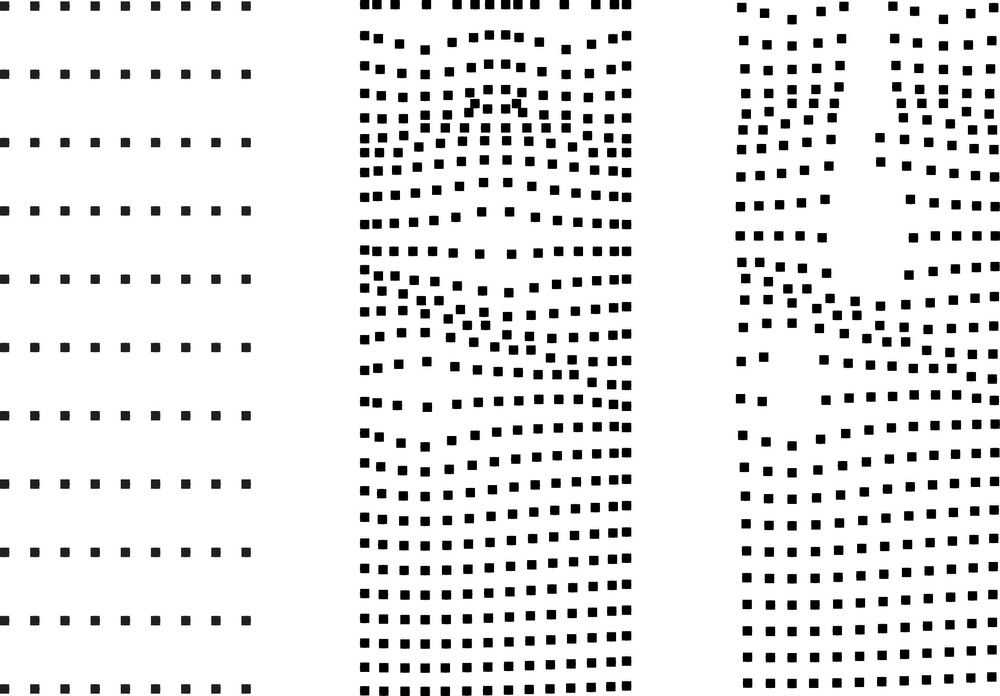 GRID DEFORMATION DIAGRAMS
GRID DEFORMATION DIAGRAMS FLOORPLAN-FINAL
FLOORPLAN-FINAL AXON
AXON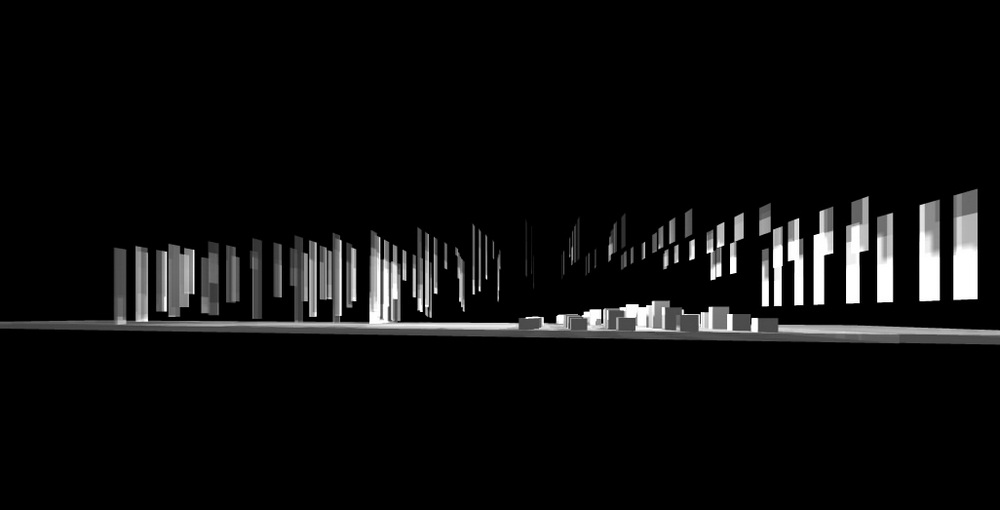 RENDER
RENDER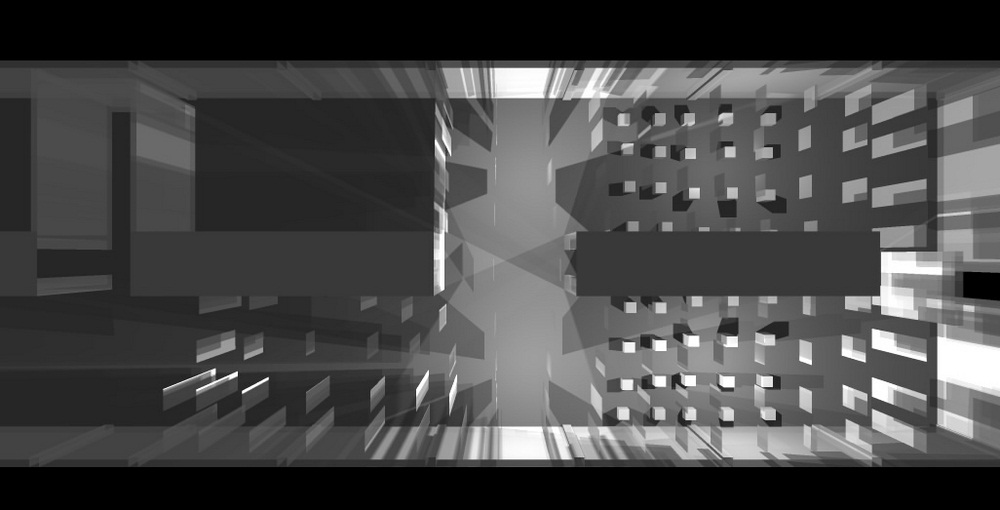 RENDER
RENDER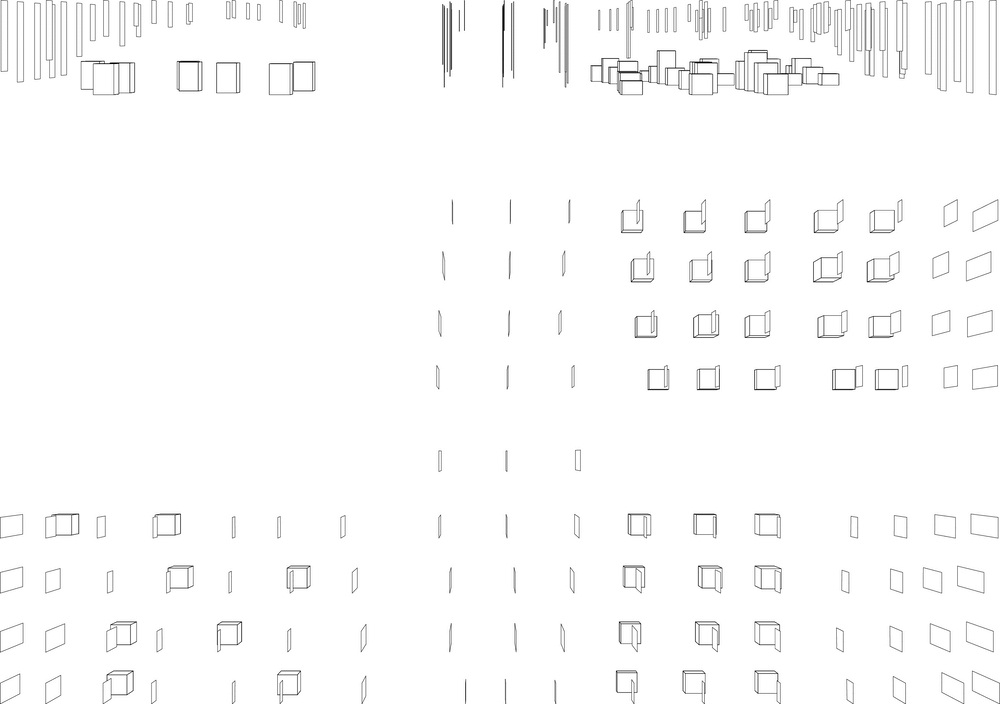 3D_SECTION_TOP VIEW
3D_SECTION_TOP VIEW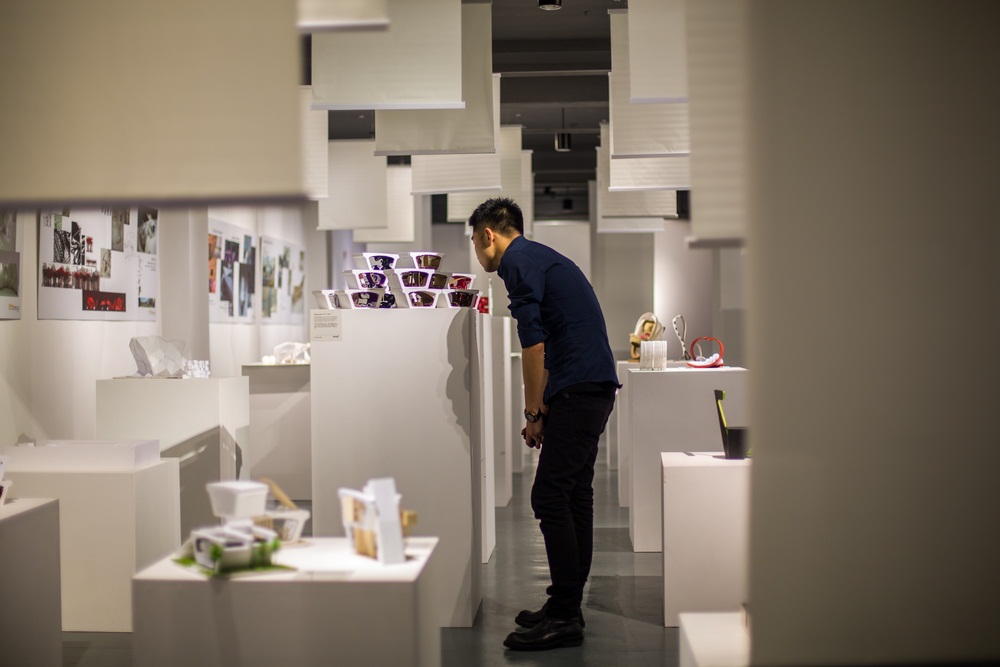 INSTALLATION
INSTALLATIONREAD ALSO: ZAHA HADID / BEYOND BOUNDARIES / ART & DESIGN / IVORYPRESS SPACE